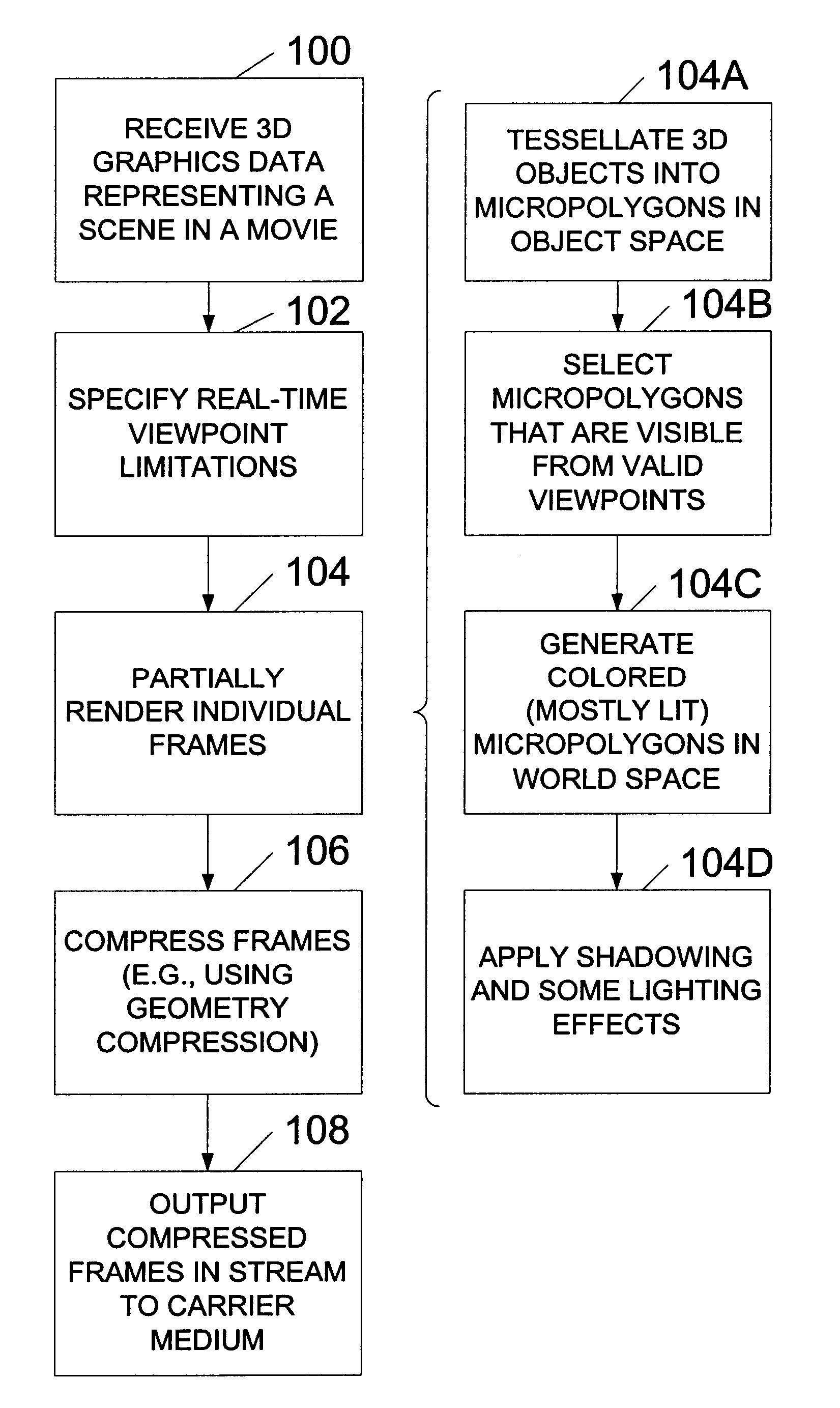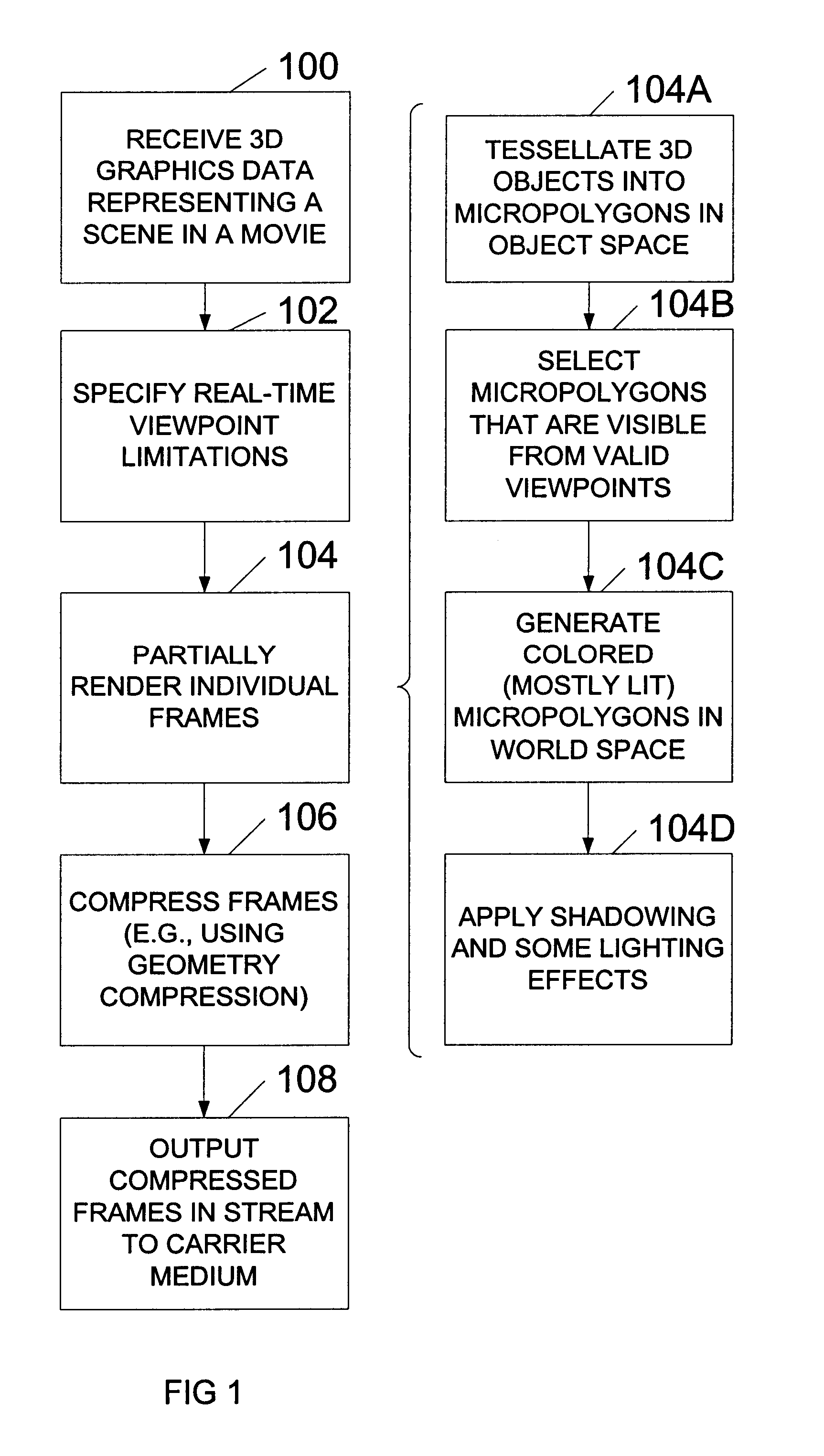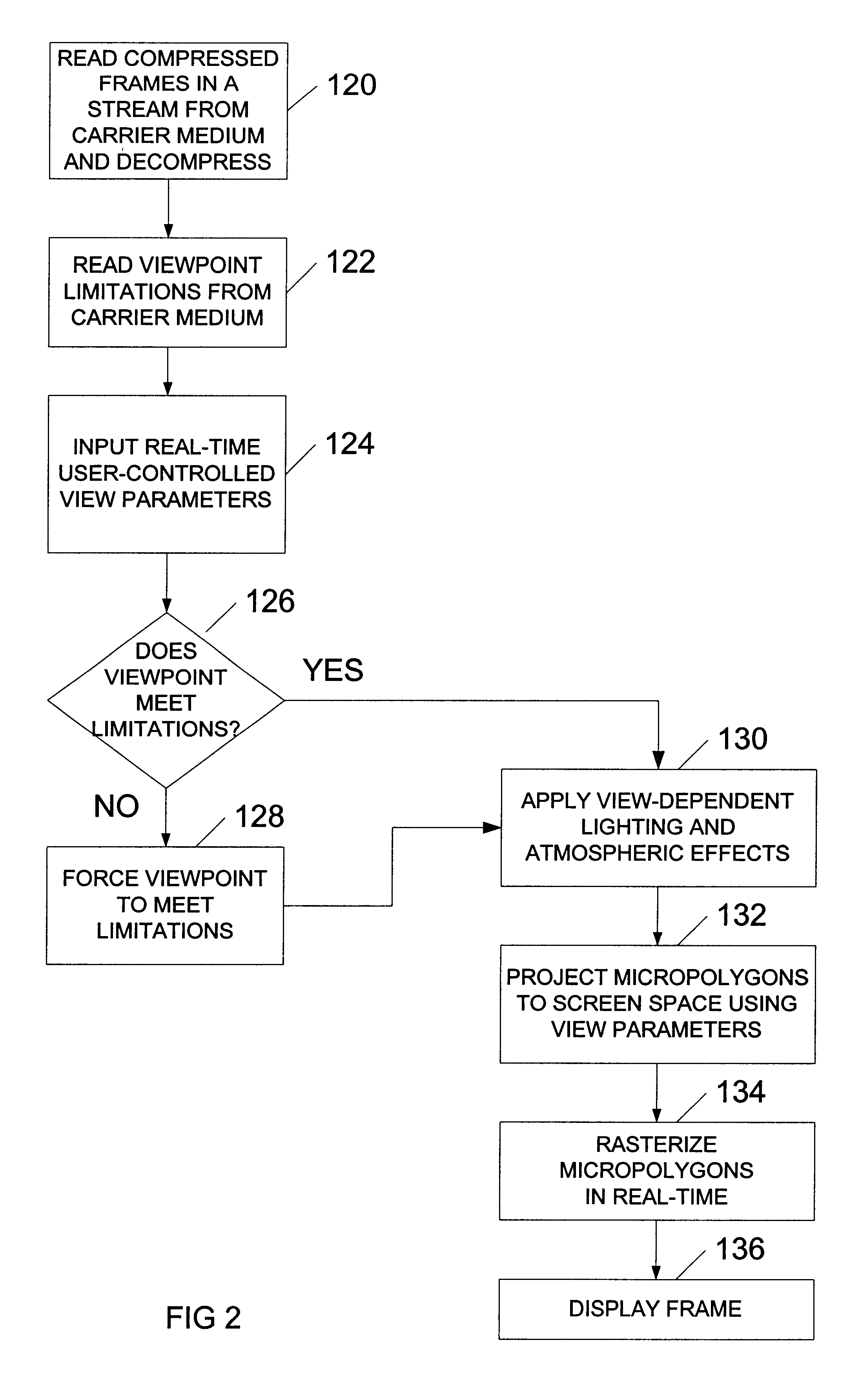System and method for generating and playback of three-dimensional movies
a three-dimensional movie and movie system technology, applied in the field of computer graphics, can solve the problems of limited stereo effect, visual stereo has not seen widespread success relative to standard motion pictures, and new systems have yet to see widespread acceptance as movie playback devices
- Summary
- Abstract
- Description
- Claims
- Application Information
AI Technical Summary
Problems solved by technology
Method used
Image
Examples
Embodiment Construction
Method for Generating Three-Dimensional Movies--FIG. 1
FIG. 1 is a flowchart illustrating one embodiment of a method for generating three-dimensional (3D) movies. First, three-dimensional (3D) graphics data representing a scene in a movie is received (step 100). The 3D graphics data may include data in a number of different formats. For example, three-dimensional objects that are part of the scene may be represented as volumes, surfaces, or 3D objects that have been tessellated into a plurality of polygons (e.g., triangles or quadrilaterals). The 3D graphics data may also include objects modeled with NURBS (non-uniform rational B-splines), volume elements, subdivision surfaces, meshes and other techniques. The 3D data may be generated by computer animators, by 3D scanning devices, 3D cameras, 3D digitizers, or other techniques. Depending upon the format in which the 3D graphics data is received, it may be manipulated and transformed before being transformed into a 3D movie
Once the da...
PUM
 Login to View More
Login to View More Abstract
Description
Claims
Application Information
 Login to View More
Login to View More - R&D
- Intellectual Property
- Life Sciences
- Materials
- Tech Scout
- Unparalleled Data Quality
- Higher Quality Content
- 60% Fewer Hallucinations
Browse by: Latest US Patents, China's latest patents, Technical Efficacy Thesaurus, Application Domain, Technology Topic, Popular Technical Reports.
© 2025 PatSnap. All rights reserved.Legal|Privacy policy|Modern Slavery Act Transparency Statement|Sitemap|About US| Contact US: help@patsnap.com



